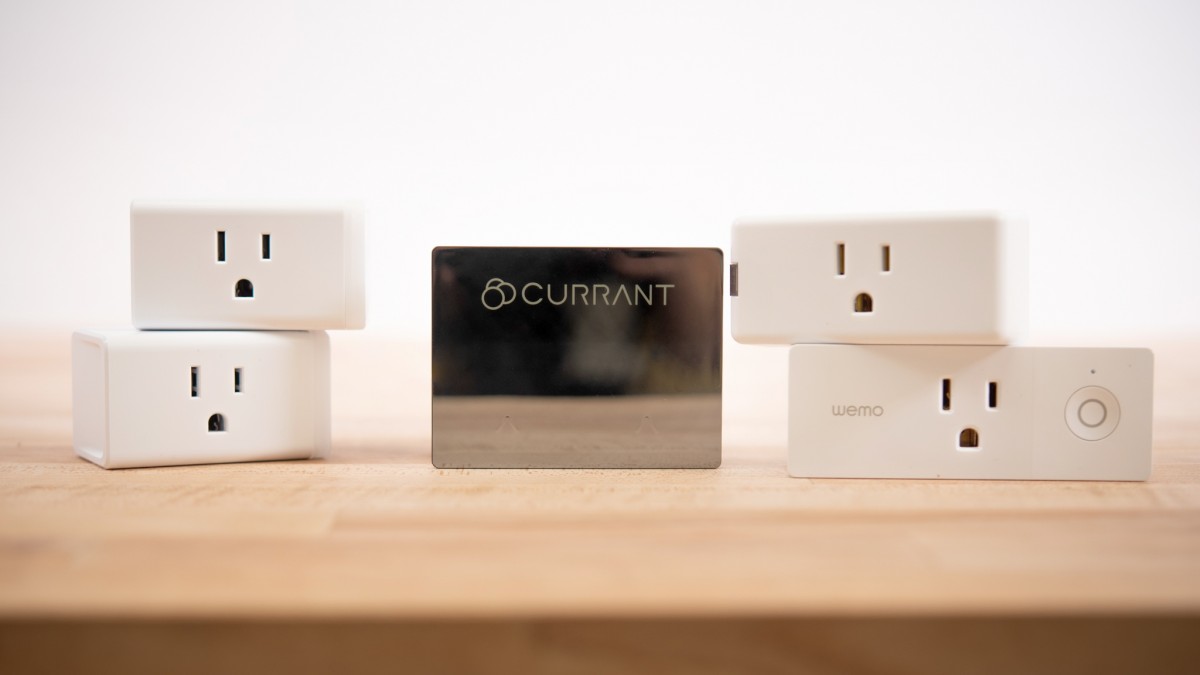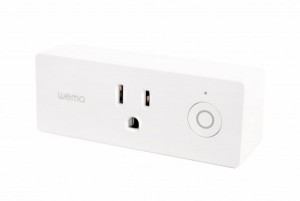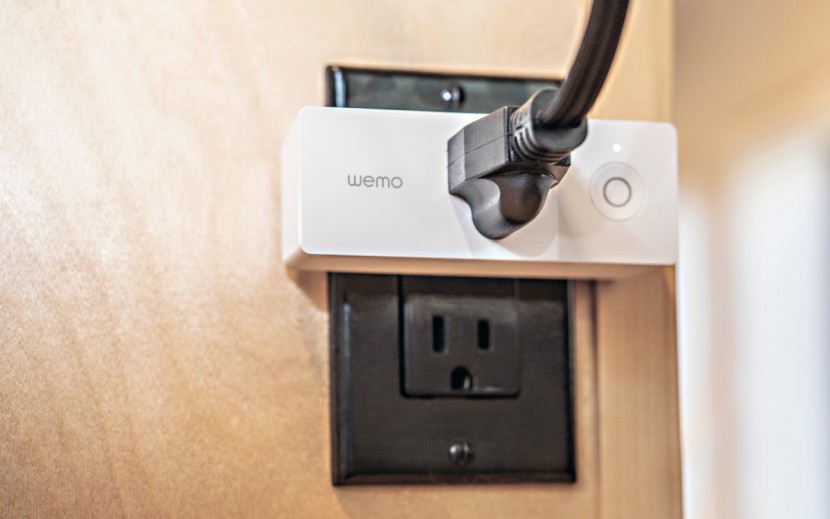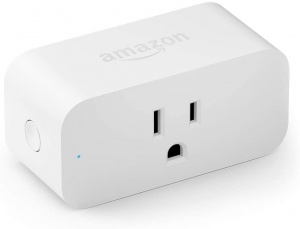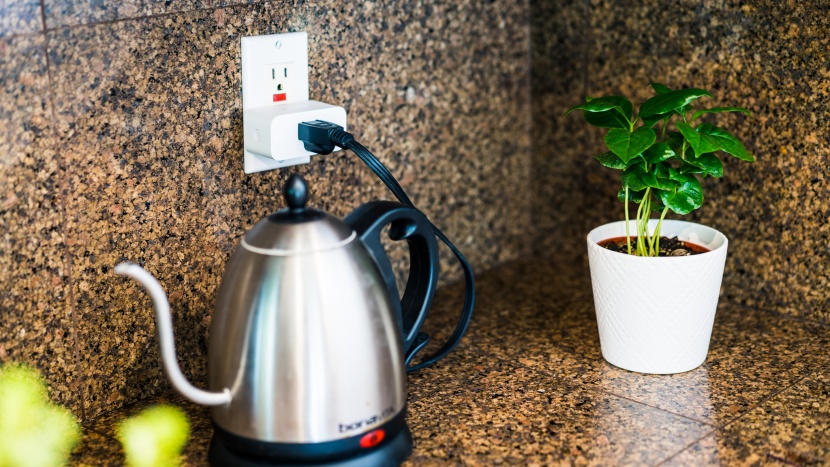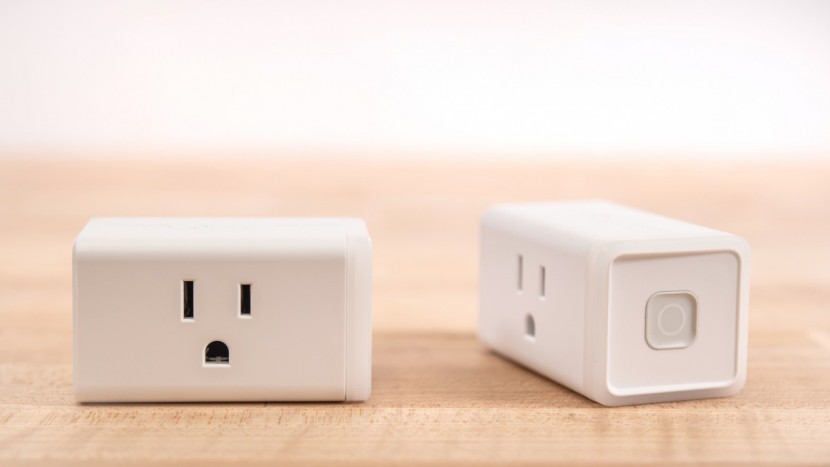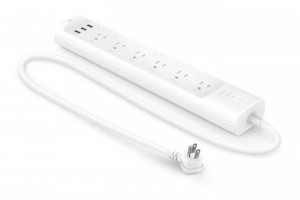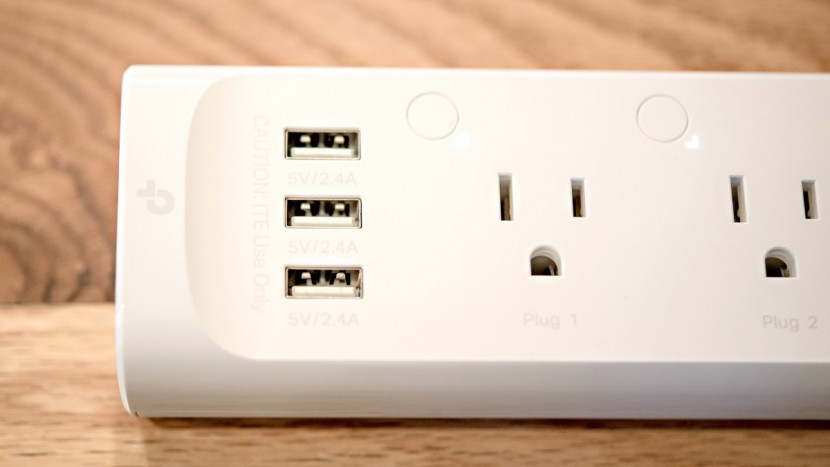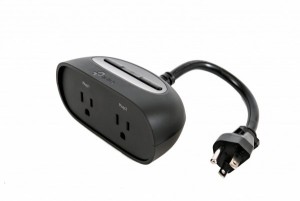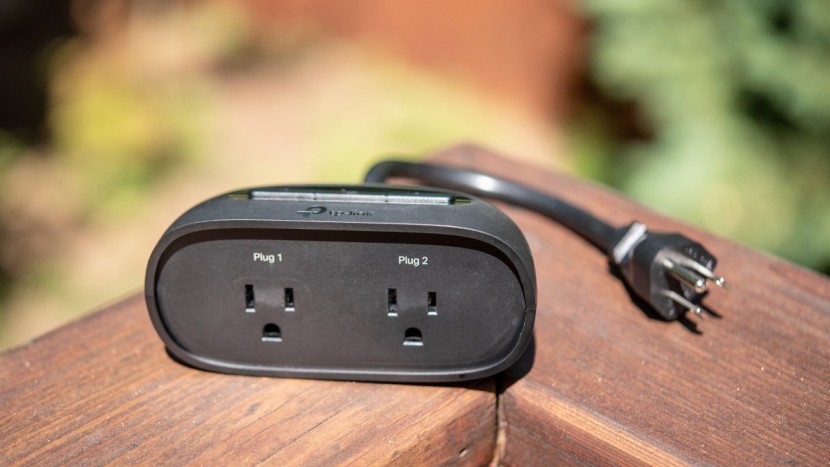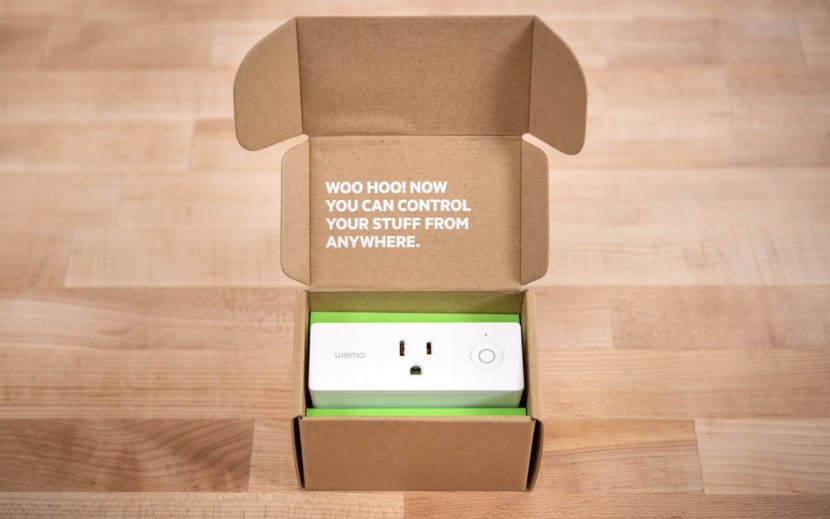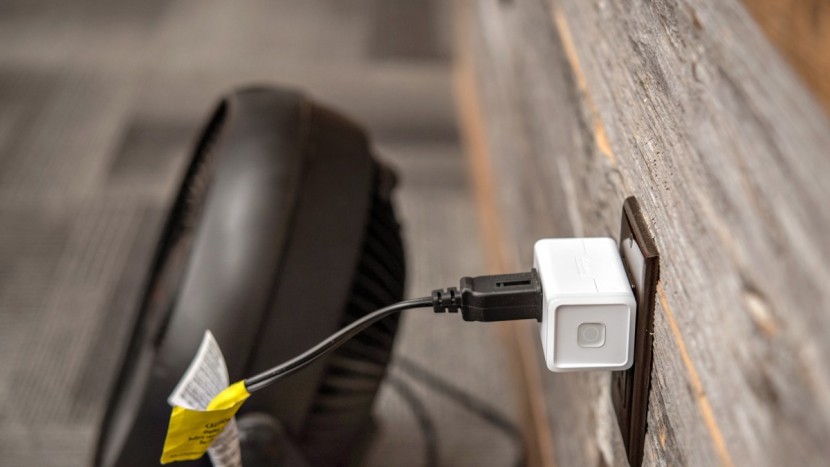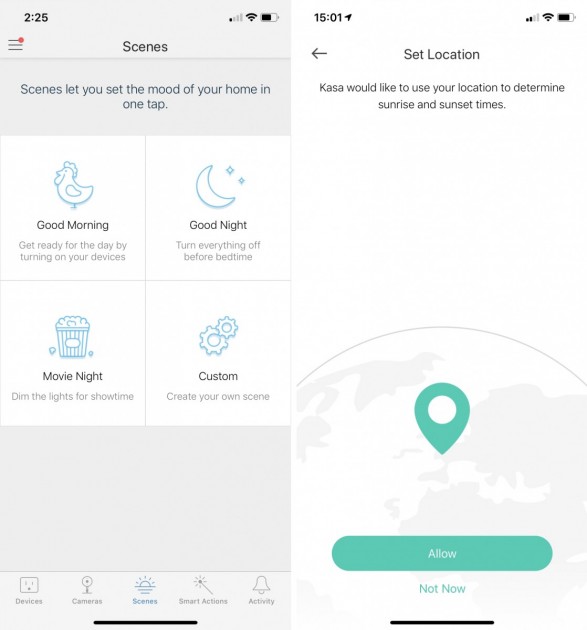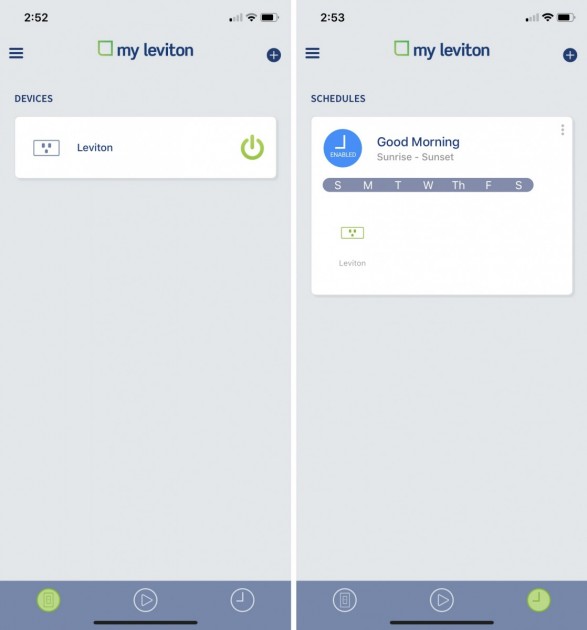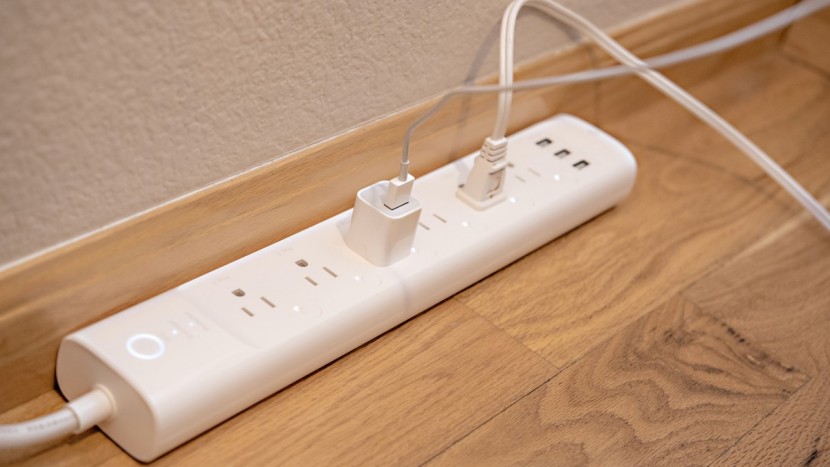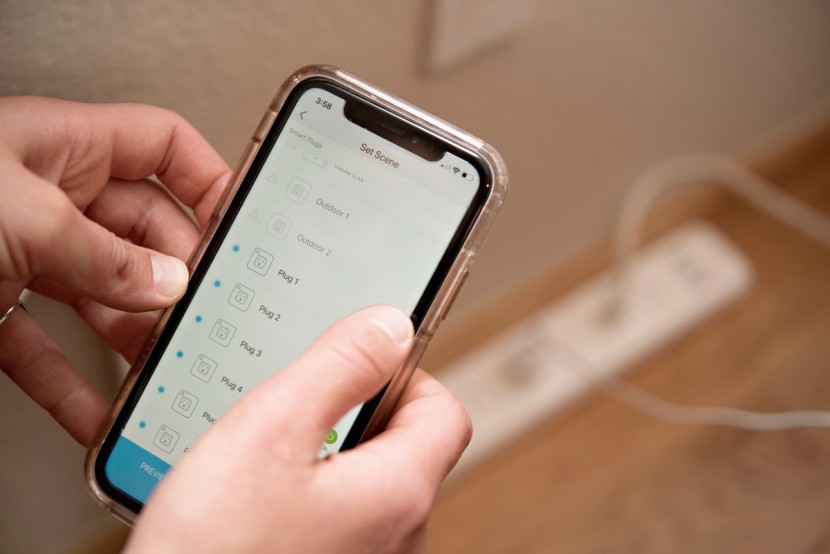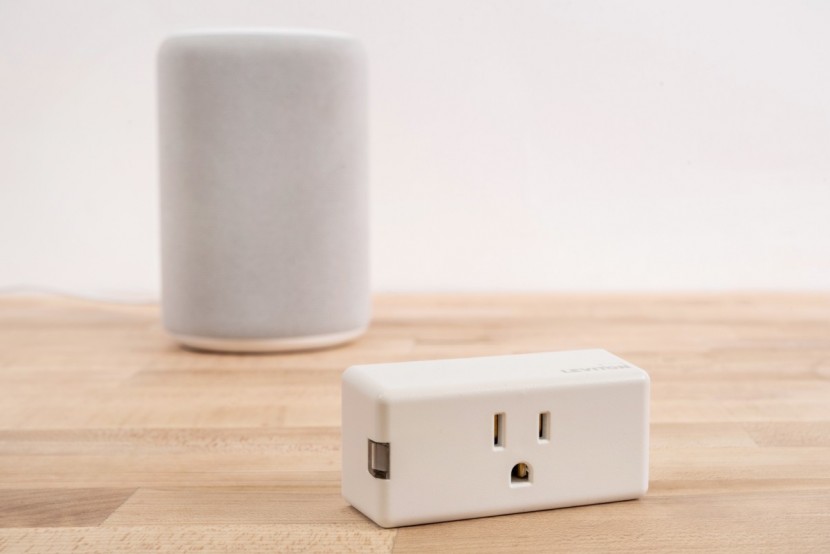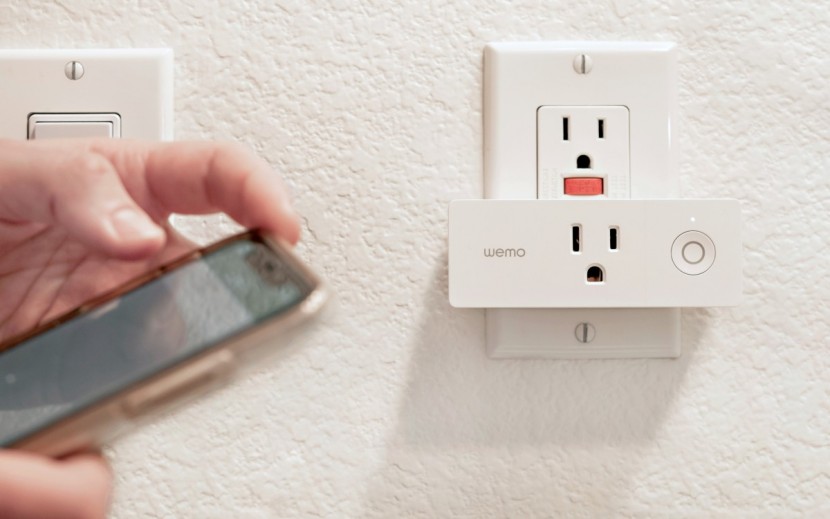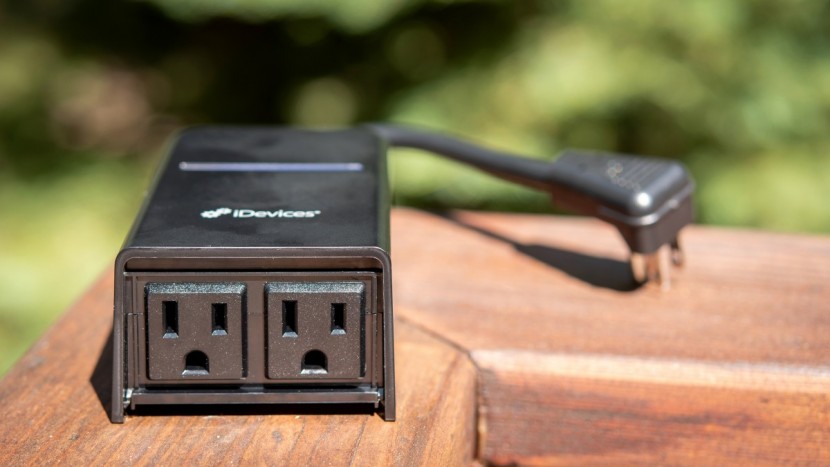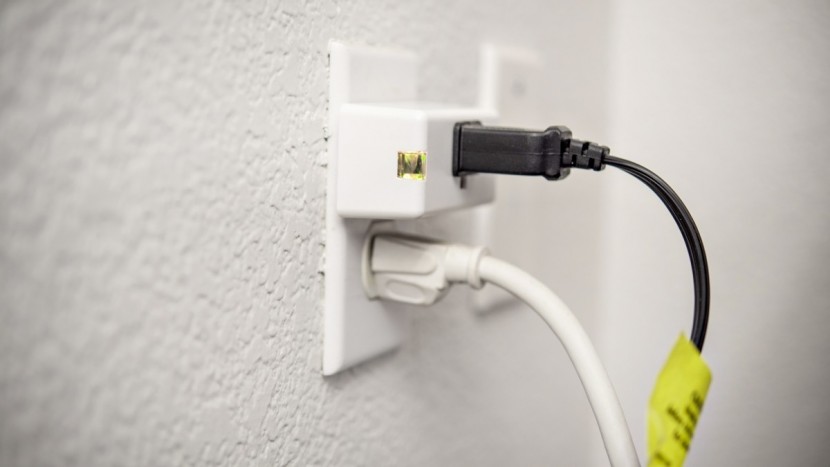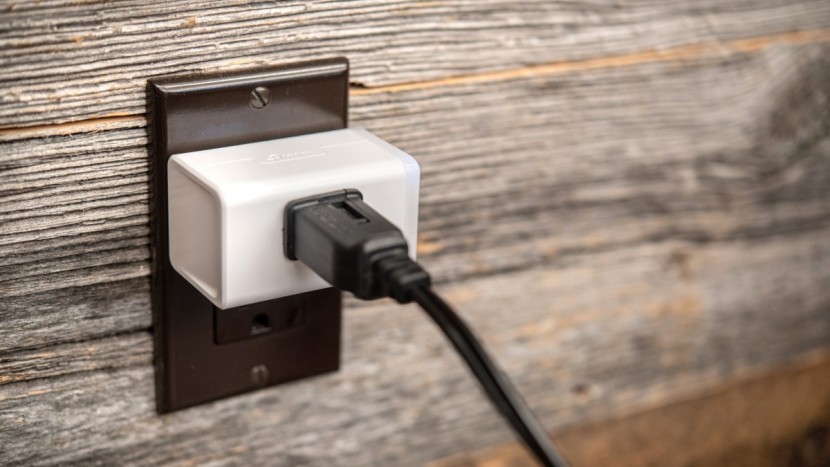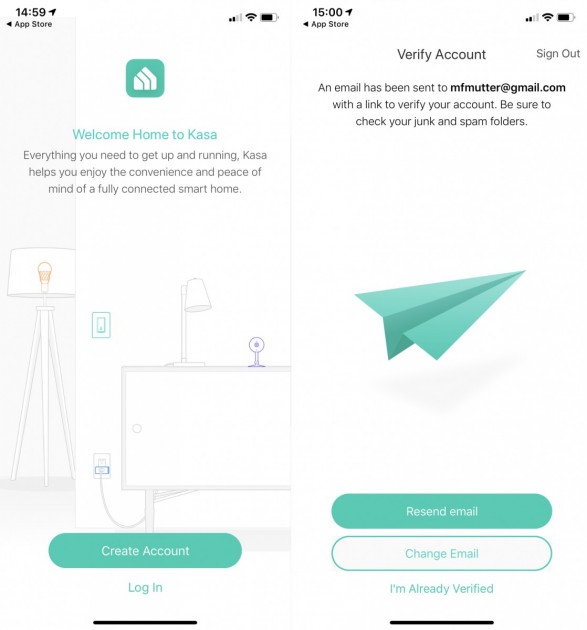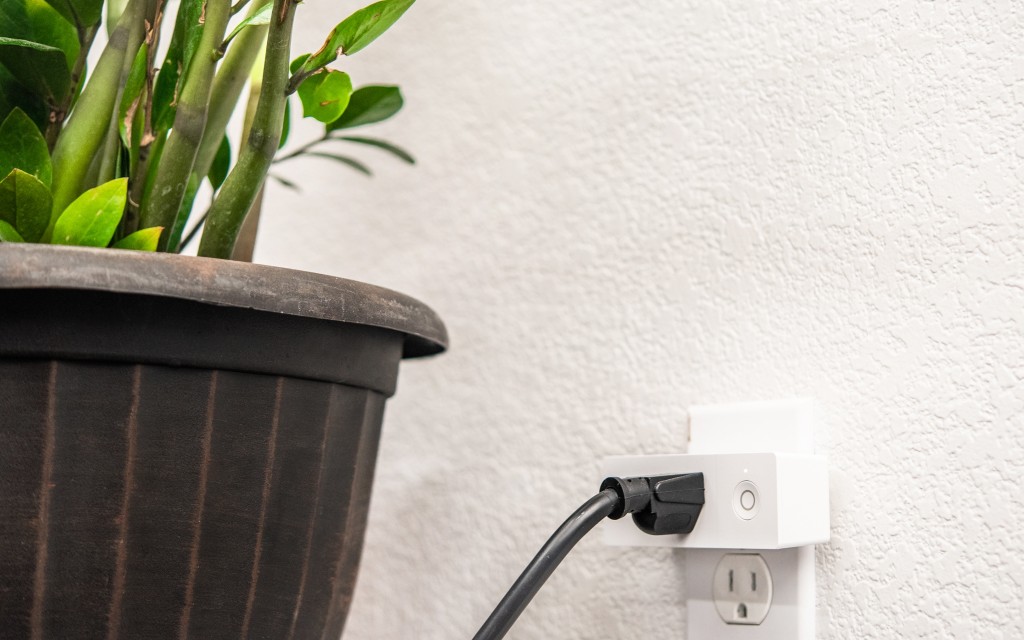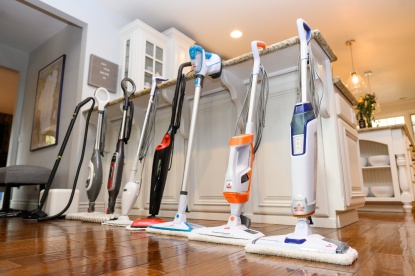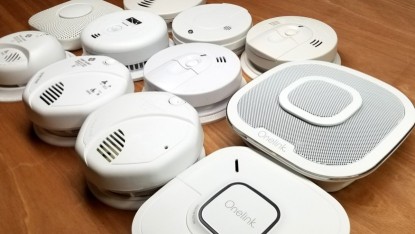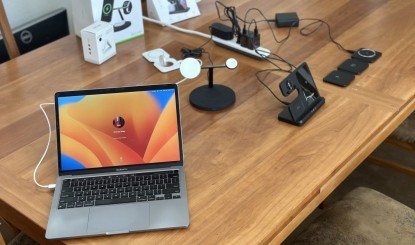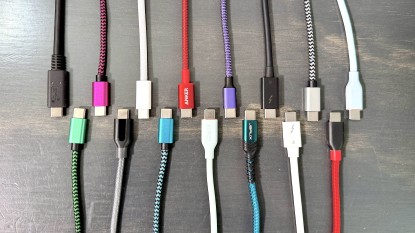We researched over 50 of the most promising smart plugs in our quest to find the best. We purchased the top 8 for some hands-on, side-by-side testing. After using each one of these plugs on a daily basis for lamps, fans, entertainment systems, and heated cat beds (yes, our pets are spoiled), we found some surprising results and ultimately would only recommend seven of the eight that we tested. Through this process, we discovered how easy each model is to set up, how intuitive their associated apps are, and how easily each bounces back from a WiFi or power outage. From those that just want to be able to turn a lamp on before they get out of bed to those looking to build a sophisticated smart home, this review has you covered.
If you're ready to put together a smart home, we can help. Our reviews span everything from thermostats to smart locks and top-rated robot vacuums. We've also tested the best smart smoke detectors, security cameras, and wifi extenders to help you figure out the right products for your living space.
Our Picks of Smart Plugs
Best Basic Smart Plug
WeMo Mini
If you're looking for a smart plug to perform simple operations like turning on or off a lamp or fan from the comfort of your bed or couch, check out the WeMo Mini. This smart plug has an intuitive setup and is budget-friendly. Unlike most plugs, it doesn't require creating an account to get started; simply download the app, scan the QR code, and ask Alexa to “discover devices.” Then, you can set schedules and control devices directly from your phone or via a virtual assistant. The WeMo is compatible with all Amazon, Google, Apple, and IFTTT smart home platforms.
While the Mini offers all the basic functionality you could want from a plug for an enticingly low price, it doesn't rebound or adapt well. Switching the plug to a new WiFi network requires a reset that was much more involved than the initial setup, making it a poor choice for those who frequently switch apartments and/or WiFi routers. It was also slower than most other devices in reconnecting after a WiFi outage. However, as long as you don't experience too many WiFi outages or don't mind being a bit patient when you do, the WeMo Mini offers a great user experience for a relatively low price.
Read more: WeMo Mini review
Best Bang for the Buck for Alexa Users
Amazon Smart Plug
If your burgeoning smart home is centered around Alexa, the Amazon Smart Plug is one of the easiest and most economical ways to expand its purview. For those who already have an Alexa account and the corresponding app installed on their phone, this simple plug is a cinch to set up and use. It is relatively simple to use the same app to set schedules and adjust settings. Alexa Routines can be employed to have the plug interact with your other smart devices, such as turning on a lamp when your Alexa-enabled security camera senses motion. And, of course, it works seamlessly with Alexa's voice controls.
This plug is fairly basic, so it doesn't offer advanced features like energy usage monitoring. It also lacks broader smart home compatibility, with IFTTT possibly the most notable exclusion. Despite these minor drawbacks, this plug is an excellent way to expand the abilities of your Alexa ecosystem.
Read more: Amazon Smart Plug review
Best Runtime Tracking on a Budget
TP-Link Kasa WiFi Lite
Measuring how often you use a certain high-energy appliance is the first step in reducing your electricity usage. If you mostly want a plug to help track how often you use a certain appliance or to confront how much time you actually spend laying on the couch watching TV, the TP-Link Kasa WiFi Lite is a simple, low-cost option. This slim plug can fit behind most furniture and allows you to get instant runtime statistics on your phone for less than most of the competition.
To unlock the TP-Link Kasa WiFi Lite's cheap runtime tracking, you'll have to contend with a slightly more involved setup process (usually involving multiple apps and accounts to link the plug to a virtual assistant), as well as a slight delay in recovering from WiFi outages. However, these annoyances are relatively minor and don't diminish the usefulness of the plug's runtime tracking features.
Read more: TP-Link Kasa WiFi Lite review
Best Smart Powerstrip
TP-Link Kasa Smart WiFi Power Strip
Home entertainment systems are some of the most notorious “energy vampires” around, with all those TVs, soundbars, and streaming devices still drawing energy even after being powered down. Enter the TP-Link Kasa Smart WiFi Power Strip. It offers six independently controlled smart outlets, all in a surge-protecting power strip. This allows you to virtually unplug your entire entertainment system, either manually through a command on your phone or automatically by setting a schedule, eliminating that wasteful electricity usage. The strip can also monitor how long each outlet is turned on, providing insight into your energy usage habits. All of that functionality is controlled with a well-designed app that makes managing schedules/settings for up to six different devices surprisingly straightforward.
The biggest downside of such a fully-featured device is that the initial setup is more complicated. It requires you to make an account, confirm via email, and manually link to the smart home moderator of your choice. The same is true if you need to switch WiFi networks, which requires a full reboot of the device. We also found that it took the Kasa Power Strip a little longer to find its bearings after a WiFi outage than some of its competitors. Those small annoyances aside, we still feel the Kasa is the best solution for those that require multiple independent smart outlets in one location.
Read more: TP Link Kasa Smart WiFi Power Strip review
Best for Outdoor Use
TP-Link Kasa Outdoor
The TP-Link Kasa Outdoor, in our opinion, is your best bet for outside use. It provides a lot of functionality for a relatively low price. It offers two independently controlled outlets attached to a single plug, which allows you to have a set of deck string lights and a birdbath bubbler on separate schedules. This plug also works with almost every smart home system, allowing it to integrate seamlessly into most existing setups.
The only minor downsides of the Kasa Outdoor are that the installation process is slightly more challenging than that of other products, and there is a small delay in rebooting after a WiFi outage. However, both of these annoyances feel trivial when considering its otherwise great performance.
Read more: TP-Link Kasa Outdoor review
Compare Products
Why Trust GearLab
We first researched the market, looking at over four dozen products before purchasing this selection of 8 smart plugs to test. We spent weeks throwing a series of challenges at these plugs. We controlled them with Alexa, Google, and Siri and used them in conjunction with If This Then That applets. We also installed their accompanying apps on both Android and iOS devices. We cut off their power supply and shut off the WiFi. Upon turning everything back on, we timed how long each plug took to reorient itself and noted if user input was required to recapture functionality. We also spent some time living with each plug, creating schedules for turning lights on and off and using them to summon our coffee makers in the morning, all to get a feel for how well these devices incorporate into daily life.
Our testing of smart plus is divided across four rating metrics:- Ease of Setup (40% of total score weighting)
- Reliability (30% weighting)
- Interface (15% weighting)
- Voice Assistants (15% weighting)
Review authors Michelle Powell and Max Mutter have been using, testing, and writing about smart home devices for more than 4 years. In that time, they've purchased and conducted hands-on testing of hundreds of different devices. At any given time, Max and Michelle have a dozen smart home apps on their phones, controlling even more smart locks, WiFi thermostats, security cameras, and robot vacuums. This full and long-term immersion into the world of connected home devices gives them significant insight into the usefulness and overall performance of the plugs currently on the market.
What's the Best Value?
Value is always important to consider, but we found that the range for smart plugs is relatively narrow. We feel that the WeMo Mini offers great value for most people, and the Alexa Smart Plug is a great deal for Alexa users.
Choosing the Right Smart Plug
Though virtual assistants like Alexa and Siri have been ubiquitous for nearly a decade, leveraging that technology into anything more than inquiring about the weather or asking how old George Clooney is has been a relatively slow evolution. Enter the smart plug. These simple, WiFi-enabled devices fit into standard wall sockets, essentially linking any appliance plugged into the wall to the limitless possibilities of the internet. You can turn things on and off via your phone or by yelling commands at your favorite virtual assistant. You can set schedules for individual appliances and even have a fan automatically turn on when it gets to a certain temperature (or when it's George Clooney's birthday if you really want to).
Why Get a Smart Plug?
The possible uses for smart plugs are seemingly infinite, so we'll list a few of the most common to help you determine if purchasing one may benefit you.
Remotely Summon Appliances
Here, we have in mind functions like turning on a space heater before leaving the cocoon of your comforter, turning on lights before entering a dark house, or turning lights off before starting a movie without leaving the couch. You could even use one to turn on a coffee maker or kettle to brew your morning drink before you get out of bed. Many people also use a smart plug to start their slow cooker recipe midday, ensuring it's hot and ready when they get home.
Editors' note: You should always be careful when putting devices on autonomous schedules. While things like space heaters are often compatible with smart plugs, leaving one on a schedule could mean inadvertently having it turn on unattended, presenting a potential hazard.
Security
It's an old trick to put a few lamps on a timer so that they turn on and make it look like you're home while you're on vacation. However, we all remember the scene in Home Alone when the burglars identify the empty house based on the lights turning on at the same time every night. Many of these plugs have 'away' modes that turn lights on and off in a slightly more randomized, natural-feeling pattern, ensuring that Joe Pesci won't steal your jewelry. Some can more organically adjust based on the local sunset time.
Energy Savings
Many home gadgets and appliances, including many TVs, computers, and kitchen devices, still draw non-trivial amounts of power when plugged in but not in use. Smart plugs help you get around this issue. These devices not only let you completely turn off appliances from your phone, but you can also put them on schedules, ensuring your devices won't be needlessly using power while you're not at home.
Energy Monitoring
Beyond saving energy by cutting power, some of these models can measure exactly how much power each of your appliances uses. That kind of data is a powerful tool that can inform some behavior changes that could greatly impact your electric bill.
Policing Childrens' Technology Use
Some plugs let you set time usage limitations, automatically turning off a TV or video game after it's been on for more than 2 hours in a 24-hour period. Even if a plug doesn't offer such a feature, it will likely offer scheduling features that would allow you to set the TV or video game to only be usable during certain hours of the day. You just have to ensure your kids don't figure out how to unplug the smart plug and plug their device directly into the wall.
Considerations for Picking a Smart Plug
The good news is that we've yet to find a truly terrible plug; therefore, it's unlikely you'll end up with a completely unusable device. In fact, if you already have a smart plug that you at least like and are looking to buy another one, we'd usually recommend sticking with the same company just so all of your plugs can easily live within the same app. However, if you're searching for specific advanced features, like energy usage monitoring, or are seeking compatibility with a specific virtual assistant or smart home ecosystem, you're going to want to pay attention to the specifics.
Does it need a hub?
This review focuses on WiFi-enabled plugs — devices that 'talk' directly with your home's WiFi. These types of products are by far the simplest and, for most people, can make their homes smarter with the least amount of hassle. Some plugs require a smart hub to function — essentially a separate device that acts as an intermediary between the plug(s) and the internet connection. The most popular hubs are Zigbee and Z-Wave. Apple HomeKit requires a hub of sorts, as you'll need an Apple TV, HomePod, or iPad to access HomeKit devices remotely. If you already have a smart device that uses a hub, it may make sense to get a plug that links to that hub. However, if you're just getting into the smart home game or your current smart devices don't require a hub, we'd suggest going with a plug that connects directly to your WiFi. It keeps things a bit simpler and doesn't tether you to a specific system if your smart home needs or tastes change in the future.
Smart Home/Virtual Assistant Compatibility
One of the most useful things a smart plug can do is enable a wide array of voice commands for different appliances. This requires the support of a virtual assistant like Alexa, Siri, or Google Home. No matter which assistant you currently use or are planning on using in your home, you'll want to make sure whatever model you choose is compatible. For the most part, support for Alexa and Google Home is almost universal, while Siri (Apple HomeKit) users will have to be much pickier in the models they choose.
If you are hoping to create more sophisticated automated triggers, like having your lights turn on when you pull into the driveway, you'll want to make sure the plug you choose can work with IFTTT (If This Then That). Though not the easiest platform to use, IFTTT allows you to create protocols or 'applets' across devices and services. So you can do things like create an applet that says, “If my phone's location services say I'm in the driveway, then turn on the plug connected to my lamp,” or, “If the Weather Channel app says it's hotter than 75˚, turn on the plug controlling my fan.”
Energy Monitoring, Scenes, and Other Abilities
Nearly every plug on the market will allow you to control devices remotely and set schedules for them, but there are some advanced features you may want to look out for. Energy monitoring can tell you how much power your appliances are using. Some plugs that don't offer this can monitor runtime, which is less precise but can still help expose your energy usage. Many plugs offer scenes, which is a fancy way of saying you can program a setting that controls multiple devices at once at the push of a button or voice command. For example, you could program a 'leaving' scene, say, “Alexa, I'm leaving,” as you walk out the door, and have all of your plugs turn off.
Maximum Power
You won't need to worry about maximum power thresholds for most devices like TVs, lamps, and fans. However, if you want to use a smart plug with a more power-hungry device, such as an air conditioning unit, refrigerator, or toaster oven, you'll want to ensure that plug can handle the load. Most plugs have a maximum power of 1.8 kW, but some go as low as 1.2 kW. You'll want to confirm the peak power of whatever appliance you're using doesn't exceed your smart plug's limitations.
Orientation
It may not seem obvious, but the extra inch (or more) a smart plug adds to your outlet is fairly significant. If you then must plug an appliance into the front of said plug, it may prevent you from using outlets hidden behind couches or other furniture. Some plugs get around this problem by placing the outlet on the side of the device, resulting in a much slimmer overall profile.
Physical vs. Electrical Switches
This isn't a consideration for smart plugs, but the appliance you want to use them with. If the appliance has a physical on/off switch, then you're good to go as you can leave the switch in the on position and then control it remotely with your smart plug. If the appliance solely has a power button, or worse, a touchscreen-type power control, you may be out of luck. This could indicate an electrical switch, which just registers the first button press as power on, then the opposite for every consecutive press. In that case, you could cut power to the device with a smart plug, and then when you turn the plug back on, the device will only power up into standby mode and not turn on. The best way to test if your device has an electrical switch is to turn it on, unplug it, then plug it back in. If it screams back to life upon being plugged back in, you're in luck! If it doesn't, it likely has an electrical switch that will make using the device with a smart plug problematic.
Setup and Rebooting Time
Two areas where we found plugs to display noticeable differences were their setup processes and their ability to recover from a spontaneous internet or power outage. Some models require that you download an app, create a new account and confirm it via email, and then re-sign into that account within the corresponding virtual assistant app of your choice. Others offer much quicker processes, where you can simply sign in using an existing account (like Facebook or Google) and then have your other smart devices discover the plug without dealing with any additional apps.
Similarly, we found that some models can spring right back to attention after a WiFi or power outage, while other models take a few minutes or even longer to find their bearings again. And some others often require a type of manual reboot after losing the WiFi connection. Our top picks perform well in this regard, all dealing with losses of connection without missing a beat.
Conclusion
Smart plugs are the easiest and most affordable way to add connected functionality to your current appliances and devices. Whether you want to turn on your slow cooker remotely while at work, set your lights on a schedule, or even have your fans and space heaters react to the weather outside, the right plug can make it happen. We hope this article has helped you decide which smart plugs you'd like to utilize in your home.
—Max Mutter and Michelle Powell


